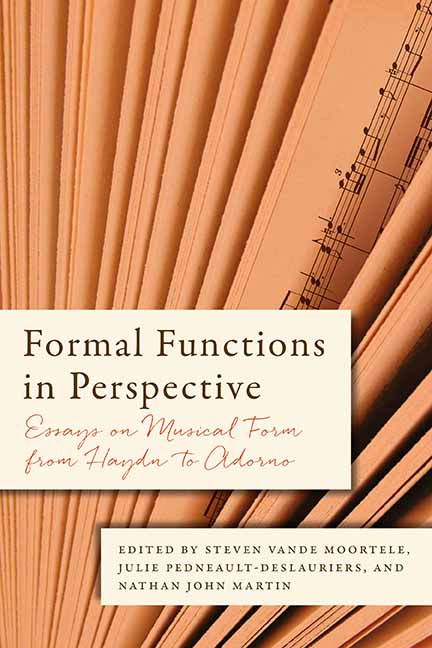Book contents
7 - Sentences in the Lieder of Robert Schumann: The Relation to the Text
Published online by Cambridge University Press: 26 May 2021
Summary
My chapter extends William E. Caplin's theory of formal functions in two ways: it applies the theory to vocal rather than instrumental works, and to romantic rather than classical music. Neither of these extensions is new. There have been several earlier explorations of the applicability of the theory to vocal works. Matthew BaileyShea has studied Wagner's use of the sentence in his post-Lohengrin music dramas; Nathan John Martin has investigated the use of Caplin's thematic types in Mozart's and Haydn's operas, and has discussed an example of a sentence in a song from Schumann's Dichterliebe; and Stephen Rodgers has studied Schubert's use of sentence form in Die schöne Müllerin. As for applications to the nineteenth-century repertoire, Caplin himself has emphasized the continuing relevance of his theme types to nineteenth- century music, and much of the work on vocal music cited above deals with music of that century.
In this chapter I follow in the above authors’ footsteps as I focus on Schumann's use of the sentence in his lieder. My aims are twofold: to investigate (1) how Schumann's sentences relate to the structure of the poetic texts, and (2) how his sentences reflect the meaning of the texts.
Preliminary Matters
Before embarking on this investigation, I consider two preliminary issues: the nature of the nineteenth-century sentence, and the role played by a theme type that we associate with classical instrumental music within a short vocal genre of the romantic period. The authors cited above acknowledge that numerous deviations from classical norms must be expected as one ventures beyond the original purview of form-functional theory. The many deviations from normal tight-knit theme types that Caplin has discovered within the classical repertoire are encountered much more frequently in nineteenth-century music. In his discussion of the sentence, Caplin notes that even in tight-knit sentences, there may occur expansions beyond the normative two-measure duration of the basic idea, extensions of continuation function and expansions of cadential function, and compressions of the continuation phrase. He demonstrates that loosely knit sentences, typical of subordinate themes, deviate even more drastically from the basic tight-knit format.
Information
- Type
- Chapter
- Information
- Formal Functions in PerspectiveEssays on Musical Form from Haydn to Adorno, pp. 225 - 251Publisher: Boydell & BrewerPrint publication year: 2015
Accessibility standard: Unknown
Why this information is here
This section outlines the accessibility features of this content - including support for screen readers, full keyboard navigation and high-contrast display options. This may not be relevant for you.Accessibility Information
- 6
- Cited by
